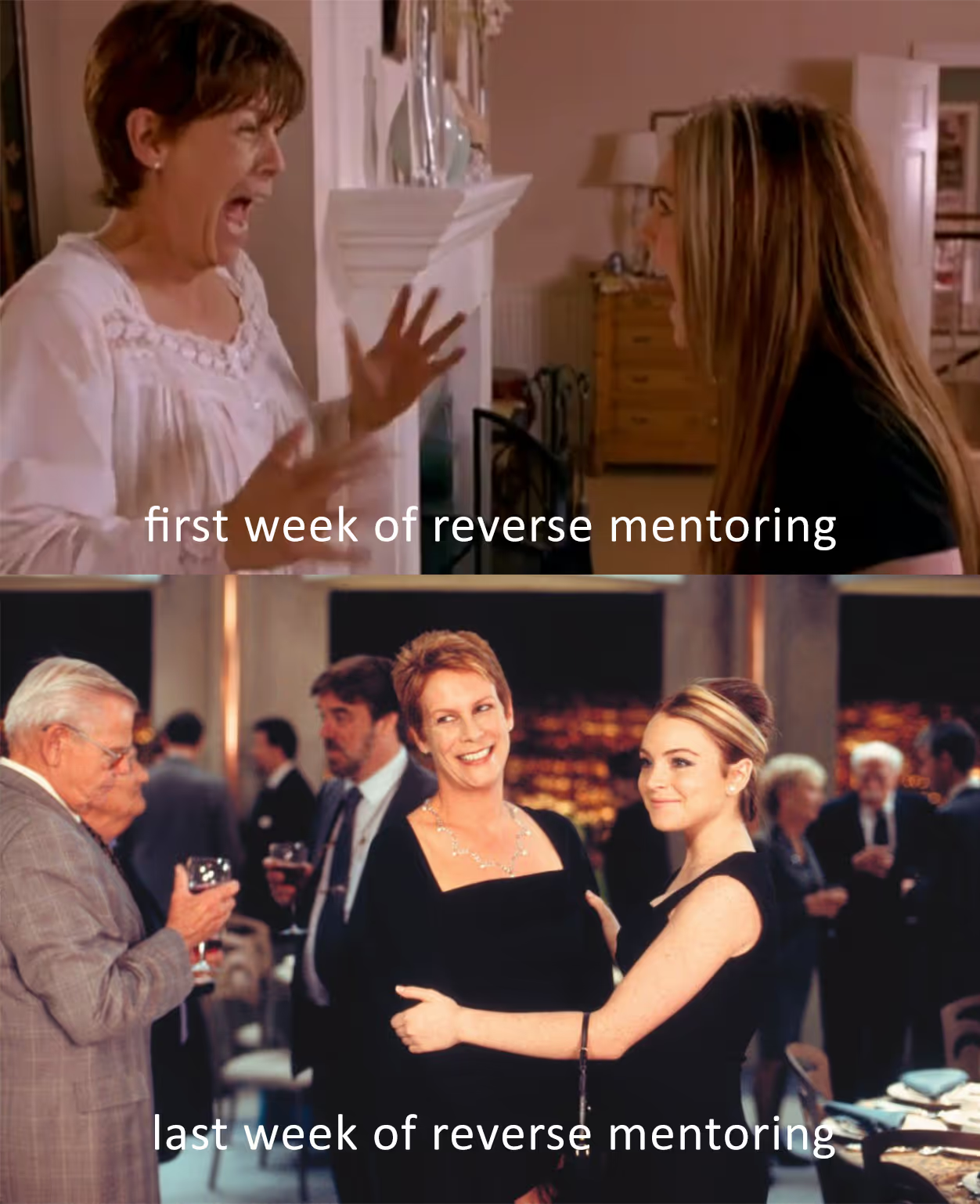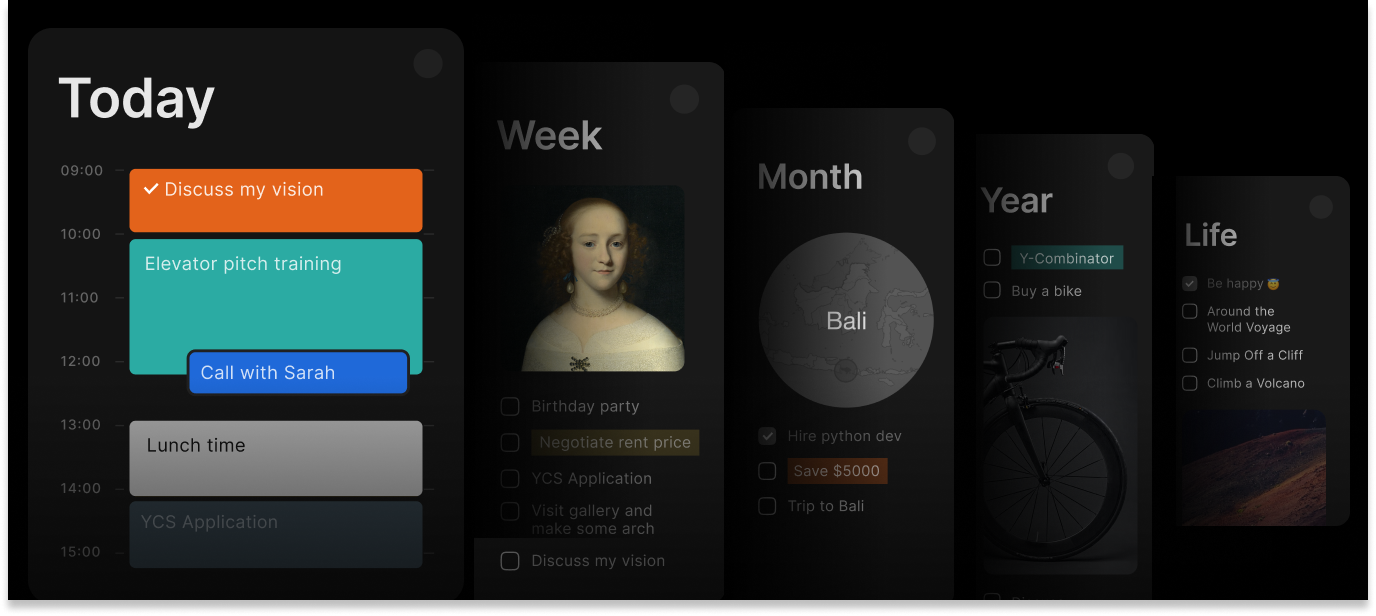Creating a 'Freaky Friday' Effect: Teams with Reverse Mentoring

In traditional workplace hierarchies, mentorship usually flows in one direction—seasoned professionals guide and advise their younger colleagues, helping them navigate their careers. But what happens when we flip the script?
Enter reverse mentoring, an approach where junior or less experienced employees mentor senior colleagues, offering insights into technology, social media, cultural trends, and even new ways of thinking about leadership and diversity.
Reverse mentoring is not a new concept. It can even be compared to the situation in the movie Freaky Friday. However, unlike the characters portrayed by Lindsay Lohan and Jamie Lee Curtis, who were forced to cooperate due to magical circumstances, in business, such decisions are made consciously.
The Benefits of Reverse Mentoring
To take such an unconventional step in uniting colleagues, we have compiled the main advantages of this new approach.
Bridging Generational and Cultural Gaps
Workplaces today often consist of multiple generations working side by side—Baby Boomers, Gen X, Millennials, now Gen Z, soon Gen Alfa. These groups bring different perspectives, work habits, and technological expertise. Reverse mentoring facilitates meaningful conversations between generations, helping older employees better understand digital natives and younger employees gain insights into corporate strategy, leadership challenges, and industry expertise.
Additionally, reverse mentoring has been successfully used to enhance cultural awareness. As organizations strive to build diverse and inclusive workplaces, mentoring programs that expose senior leaders to employees from underrepresented backgrounds can help address unconscious biases and improve inclusivity in decision-making.

And although at first, it may be challenging for two very different colleagues to come together, eventually, they can transform into a strong team.
Enhancing Technological Proficiency
The rapid pace of technological advancement means that senior executives often find themselves lagging behind in areas such as AI, social media marketing, or remote collaboration tools. Younger employees, who have grown up immersed in technology, can provide valuable guidance on these topics, ensuring leadership remains digitally fluent.
For example, major companies like General Electric and Procter & Gamble have implemented reverse mentoring programs where younger employees teach senior leaders about emerging technologies, helping them make better-informed strategic decisions.
Encouraging Innovation and Fresh Thinking
Reverse mentoring is a powerful way to break free from outdated mindsets. When senior executives receive unfiltered insights from younger employees, they gain exposure to trends and innovative ideas that might not otherwise reach them. This can lead to the adoption of new business strategies, fresh marketing approaches, and more agile ways of working.
Promoting Employee Engagement and Retention
Junior employees who participate in reverse mentoring programs often feel more valued and invested in the company's success. Rather than being passive recipients of instruction, they are actively contributing to the organization's knowledge base. This sense of empowerment leads to higher engagement, increased job satisfaction, and, ultimately, better retention rates among younger workers.
Fostering Leadership Development on Both Sides
While reverse mentoring helps senior employees stay up to date, it also provides junior employees with leadership and communication skills. Acting as mentors gives them an opportunity to develop confidence, refine their ability to articulate ideas, and engage with senior executives in meaningful ways. This prepares them for future leadership roles within the company.
How to Implement a Successful Reverse Mentoring Program
While the concept of reverse mentoring is compelling, its success depends on thoughtful implementation. Here's how organizations can make the most of this approach:
Set Clear Objectives
Before launching a reverse mentoring program, define what both mentors and mentees aim to achieve. Are you focusing on digital transformation? Improving diversity awareness? Encouraging intergenerational collaboration? Clear goals help ensure meaningful outcomes.
Pair Participants Strategically
Effective reverse mentoring requires careful matching. Pairing should be based on expertise and learning needs rather than random selection. For example, if a senior executive wants to understand the intricacies of social media marketing, they should be paired with a junior employee from the marketing team.
Create a Structured Framework
Successful programs don't rely on informal meetups alone. Establish a structured approach with regular check-ins, discussion topics, and defined objectives for each session. This ensures both parties stay engaged and derive value from the mentorship.
Encourage Open-Mindedness and Mutual Respect
For reverse mentoring to work, both mentor and mentee must enter the relationship with an open mind. Senior employees should be willing to embrace new ways of thinking without feeling defensive, while younger mentors should approach their role with professionalism and confidence.
Measure Success and Gather Feedback
Like any corporate initiative, reverse mentoring should be assessed for its impact. Collect feedback from participants, track key learning outcomes, and refine the program based on insights gained.
All of this can be easily started right now in Timestripe. More details on how to organize team work are discussed here.
So, what's the Conclusion?
While we initially compared reverse mentoring to Freaky Friday, in many ways, it's even easier than in the film. Anna and her mother often had to face the challenges of their body swap alone. In contrast, reverse mentoring in the workplace is all about constant collaboration and mutual support, ensuring that no one faces even the biggest challenges alone.
By fostering a two-way learning dynamic, organizations create an environment where knowledge is shared across all levels, breaking down traditional power structures and encouraging mutual growth.
Read next

Ready for reverse mentoring?
We've gathered all the tools you need for smart team management in one place.
Get Started

